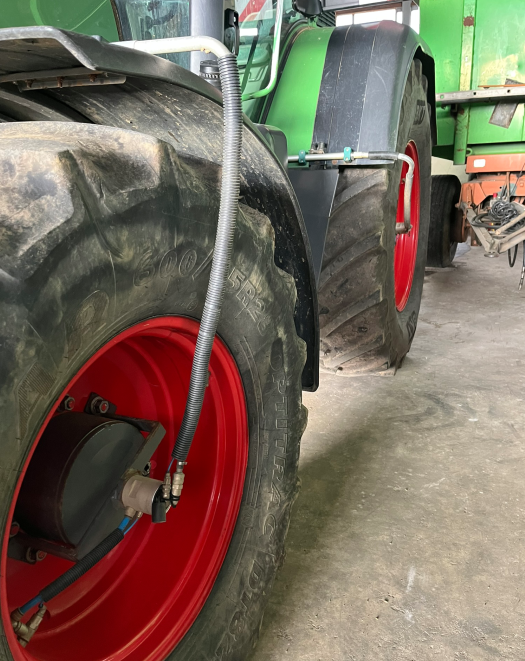Reducing fuel consumption in agriculture is an important lever for lowering operating costs and reducing CO₂ emissions. Significant savings can be achieved through modern technologies and optimised work processes.
The advantages of modern tractors: more efficient engines and technologies
Modern tractors feature numerous innovations that reduce fuel consumption:
- direct injection and turbocharging ensure more efficient combustion and higher performance;
- lighter materials reduce vehicle weight and thereby energy consumption;
- optimised transmissions enable improved speed adjustment for different operating conditions;
- electronic control systems optimise engine performance in real time, thereby reducing consumption.
Air pressure control systems for agricultural machinery
Tyre pressure regulation systems enable automatic adjustment of tyre pressure to the respective ground conditions:
- on roads, tyre pressure is increased to reduce rolling resistance and save fuel;
- in the field, the pressure can be reduced to work with a larger contact area.
Optimisation of soil cultivation
There are also various approaches to reducing fuel consumption in soil cultivation. These include using all available functions, such as economy modes for PTO (Power Take-Off) work, adjusting the engine speed, and making targeted use of the powershift transmission.
Adjusting the working depth
The working depth of the soil plays an important role in fuel consumption in the field. Reducing the working depth can help to minimise fuel consumption.
Optimum soil cultivation depth in agriculture
- Cereals: typically, soil cultivation depth for cereals is between 15 and 30 centimetres.
- Potatoes: soil cultivation depth for potatoes is usually between 20 and 35 centimetres.
- Fodder crops: soil cultivation depth for fodder crops can be between 20 and 40 centimetres.
It is important to note that these figures are general and may vary depending on specific local conditions.
Optimising work steps
Efficiently planning can greatly reduce the number of trips across the field. Furthermore, the use of combination machines, which perform several operations in a single pass, can also contribute to reduced operating costs.

GPS technology and telematics for precise vehicle control and route optimisation
The integration of telematics and GPS technology enables more precise vehicle control and route optimisation, which also helps to reduce fuel consumption. In addition, farmers can avoid overlaps when working on the fields. This leads to:
- lower fuel consumption through optimised driving routes;
- reduced seed and fertiliser use;
- better yields through more precise management.
Telematics systems also enable real-time monitoring of machine operations and help farmers to further optimise fuel consumption.
Electromobility in agriculture
Electrification is also gaining ground in the agricultural sector – with practical, everyday solutions already in use. Light farm equipment, such as yard tractors, feed mills or feed pushers, is well suited for electric drive systems.
Electric motors perform efficiently under varying loads and intermittent operation, which are common in farming tasks. Today’s models typically offer 4 to 7 hours of autonomy during daily use.
Another benefit : many farms already have a suitable power supply, often in combination with on-site photovoltaic systems. As a result, charging machinery is usually straightforward and can often be done in a cost-effective and climate-friendly way.
